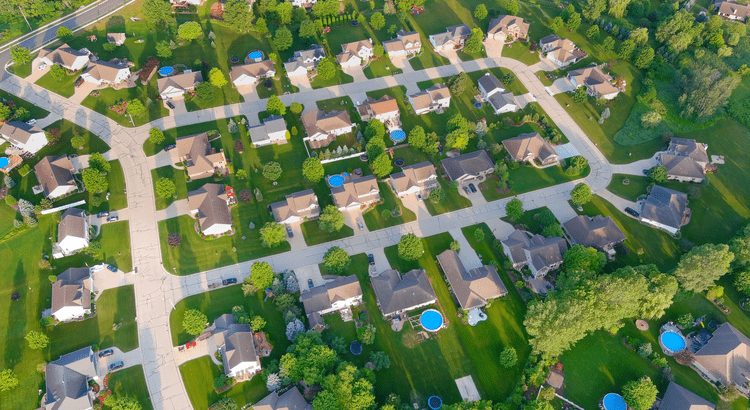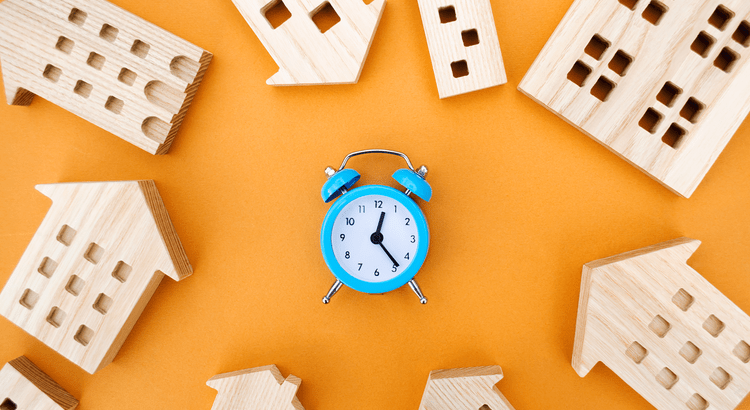Is It Time To Put Your House Back on the Market?

If you took your house off the market in late 2024, you’re not the only one. Newsweek reports that data from CoreLogic and the Wall Street Journal (WSJ) says nearly 73,000 homes were pulled from the market in December alone – that's more than any other December going all the way back to 2017 (see
Read MoreInvestors Are Not Buying Up All the Homes

There’s a misconception Wall Street is buying all the homes on the market. But data proves that isn’t true. Experts agree the share of homes bought by investors is declining – and most are smaller investors, like your neighbor who owns a second home, not Wall Street. No matter what you’ve heard, th
Read MoreIs Wall Street Really Buying All the Homes?

Let’s be real – buying a home right now is tough. You’re scrolling through listings, rushing to open houses, and maybe even losing out to more competitive offers. Somewhere along the way, you might’ve heard the reason it’s so hard to find a home is because big Wall Street investors are swooping in
Read MoreWhat To Look For From This Week’s Fed Meeting

You may be hearing a lot of talk about the Federal Reserve (the Fed) and how their actions will impact the housing market right now. Here’s why. The Fed meets again this week to decide the next step with the Federal Funds Rate. That's how much it costs banks to borrow from each other. Now, that’s n
Read MoreQ&A: How Do Presidential Elections Impact the Housing Market?

Even if you’re not looking to move right away, you may have questions about how the election will impact the housing market. When we look at historical trends, combined with what’s happening right now, we can find your answers. Based on historical data, mortgage rates decrease in the months before
Read MoreWhy Today’s Foreclosure Numbers Won’t Trigger a Crash

With everything feeling more expensive these days, it’s natural to worry about how rising costs might impact the housing market. Many people are concerned that high prices and tighter budgets could cause more homeowners to fall behind on their mortgage payments, leading to a wave of foreclosures. B
Read MoreWhy Home Sales Bounce Back After Presidential Elections

With the 2024 Presidential election fast approaching, you might be wondering what impact, if any, it’s having on the housing market. Let’s break it down. Election Years Bring a Temporary Slowdown In any given year, home sales slow down slightly in the fall. It’s a typical, seasonal trend. However,
Read MoreTwo Reasons Why the Housing Market Won’t Crash

You may have heard chatter recently about the economy and talk about a possible recession. It's no surprise that kind of noise gets some people worried about a housing market crash. Maybe you’re one of them. But here’s the good news – there’s no need to panic. The housing market is not set up for a
Read MoreWhat's the Impact of Presidential Elections on the Housing Market?

It’s no surprise that the upcoming Presidential election might have you speculating about what’s ahead. And those unanswered thoughts can quickly spiral, causing fear and uncertainty to swirl through your mind. So, if you’ve been considering buying or selling a home this year, you’re probably curio
Read MoreToday’s Biggest Housing Market Myths

Have you ever heard the phrase: don’t believe everything you hear? That’s especially true if you’re thinking about buying or selling a home in today’s housing market. There’s a lot of misinformation out there. And right now, making sure you have someone you can go to for trustworthy information i
Read MoreThe Great Wealth Transfer: A New Era of Opportunity

In recent years, there’s been a significant shift in how wealth is distributed among generations. It’s called the Great Wealth Transfer. Historically, the transfer of wealth from one generation to the next was a more gradual process, often limited to smaller amounts of inheritance or family savin
Read MoreIs Affordability Starting To Improve?

Over the past couple of years, a lot of people have had a hard time buying a home. And while affordability is still tight, there are signs it's getting a little better and might keep improving throughout the rest of the year. Lawrence Yun, Chief Economist at the National Association of Realtors (
Read MoreMortgage Rates Down a Full Percent from Recent High

Mortgage rates have been one of the hottest topics in the housing market lately because of their impact on affordability. And if you’re someone who’s looking to make a move, you’ve probably been waiting eagerly for rates to come down for that very reason. Well, if the past few weeks are any indic
Read MoreHow the Economy Impacts Mortgage Rates

As someone who’s thinking about buying or selling a home, you’re probably paying close attention to mortgage rates – and wondering what's ahead. One thing that can affect mortgage rates is the Federal Funds Rate, which influences how much it costs banks to borrow money from each other. While the Fe
Read MoreHow Do Presidential Elections Impact the Housing Market?

Are you wondering if the upcoming election will have an impact on the housing market? Here’s what history tells us you need to know if you’re considering a move. Data shows home sales slow in November but quickly bounce back and rise the following year. Prices usually keep climbing. And mortgage rat
Read MoreNot a Crash: 3 Graphs That Show How Today’s Inventory Differs from 2008

Even if you didn't own a home at the time, you probably remember the housing crisis in 2008. That crash impacted the lives of countless people, and many now live with the worry that something like that could happen again. But rest easy, because things are different than they were back then. As Bu
Read MoreFocus on Time in the Market, Not Timing the Market

Should you buy a home now or should you wait? That’s a big question on many people’s minds today. And while what timing is right for you will depend on a lot of other personal factors, here’s something you may not have considered. If you’re able to buy at today’s rates and prices, it may be bette
Read MoreWorried About Mortgage Rates? Control the Controllables

Chances are you’re hearing a lot about mortgage rates right now. You may even see some headlines talking about last week’s Federal Reserve (the Fed) meeting and what it means for rates. But the Fed doesn’t determine mortgage rates, even if the headlines make it sound like they do. The truth is, m
Read MoreHow Many Homes Are Investors Actually Buying?

Are big investors really buying up all the homes today? If you’re trying to find a house to buy, this may be something you’re wondering about. Maybe you’ve read about it or seen reels on social media saying investors buying all the homes is making it even harder to find what the average buyer is
Read More
Categories
- All Blogs 310
- Affordability 22
- Agent Value 39
- Buying Tips 80
- Downsize 3
- Economy 19
- Equity 24
- First-Time Buyers 44
- Fishers 1
- For Buyers 177
- For Sale By Owner 6
- For Sellers 122
- Forecasts 15
- Foreclosures 7
- Home Prices 60
- Inventory 37
- Luxury/Vacation 2
- Mortgage Rates 59
- Move-Up 3
- New Construction 8
- Rent vs. Buy 12
- Selling Tips 66
Recent Posts











